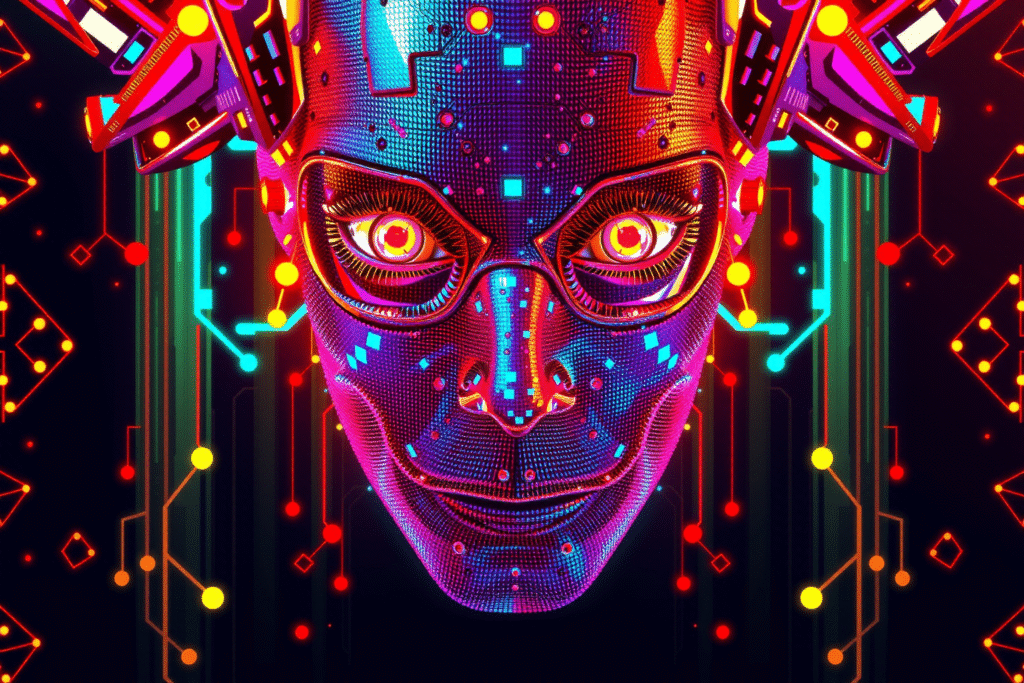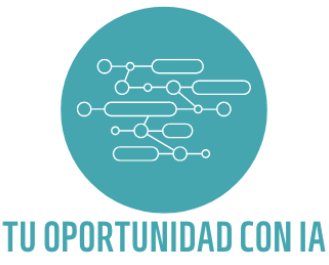
Introducción a la IA generativa: concepto, aplicaciones y ejemplosLa inteligencia artificial generativa (IA generativa) es una tecnología innovadora que está transformando diversos sectores al permitir la creación de contenido original a partir de datos existentes. En este artículo, exploraremos qué es la IA generativa, cómo funciona y sus aplicaciones en áreas como la generación de texto, imágenes, música y diseño arquitectónico. También discutiremos retos y consideraciones éticas en torno a su uso, y reflexionaremos sobre el futuro de esta tecnología prometedora.
¿What is Generative AI?
Generative AI, or artificial intelligence that focuses on creating new content such as text, images, music, or even code from existing data. Unlike other AI approaches that are limited to analyzing or classifying information, generative AI has the capability to produce innovative results that mimic or extend the patterns it has learned during training. It serves a wide range of purposes across various industries, impacting everything from creative content generation to practical applications in design, technology, music, and more.
At the core of generative AI are complex models and algorithms that enable the understanding and replication of patterns in the input data. These models can include deep learning, knowledge-based systems, and other types of machine learning techniques. Generative AI is often trained using large and diverse datasets, allowing it to learn and capture a wide range of features and structures in the data. With this, it can then generate new content that aligns with the characteristics and patterns it has internalized from the training data.
Generating Text with AI
One of the most prominent and widely recognized applications of generative AI is in the field of text generation. Through the utilization of advanced models such as OpenAI’s GPT-3 and GPT-4, generative AI has revolutionized the creation of human-like, coherent, and contextually relevant text. These models are capable of producing text in various formats, styles, and tones, leading to significant advancements in writing articles, composing code, and even enhancing customer service through the deployment of intelligent chatbots.
With the ability to understand and generate text that is indistinguishable from that written by a human, generative AI has proven to be a valuable tool in content creation, personal assistants, and information retrieval. The seamless and natural-sounding text produced by AI models has demonstrated a profound impact on industries such as marketing, education, and entertainment, where the demand for diverse and engaging content is ever-present. The continuing evolution of text generation through generative AI opens up new possibilities for enhancing communication and information dissemination in the digital age.
Image Creation from Text
In the visual domain, generative AI has enabled remarkable advancements in the creation of images from textual descriptions. Through cutting-edge models and applications like DALL·E and Midjourney, users are empowered to convert written prompts into images, offering new dimensions to artistic expression, advertising, and design. These tools have become instrumental in quickly generating diverse and personalized visual content, catering to a wide array of creative and professional needs.
The ability of generative AI to comprehend and interpret textual input and produce corresponding images has significantly streamlined and democratized the process of visual content creation. As a result, individuals and businesses alike can leverage these capabilities to realize their creative visions without necessitating specialized design skills or resources. Furthermore, the fusion of AI and visual artistry continues to prompt discussions about the nature of creativity and the evolving relationship between humans and machines in producing and perceiving art and design.
Generative AI in Music
Another compelling area of generative AI’s impact is in music composition and generation. Platforms like MusicLM showcase the potential of AI in creating original and diverse pieces of music across various genres and styles, providing musicians, composers, and producers with innovative tools to expand their creative horizons. By harnessing the power of AI, individuals in the music industry can explore novel musical compositions, experiment with different sonic elements, and even automate repetitive aspects of the production process, ultimately fostering new levels of creativity and experimentation.
The integration of generative AI in music production heralds a transformative era for the artistic and commercial dimensions of the industry. With the ability to generate music that resonates with specific moods, themes, or preferences, AI presents an unprecedented opportunity for personalized and immersive musical experiences. As the technology continues to evolve, the collaborative potential of AI and human musicians paves the way for groundbreaking advancements in music creation, performance, and audience engagement.
Voice Synthesis and Automated Dubbing
Generative AI extends its influence to the realm of speech and audio, wherein it plays a pivotal role in voice synthesis and automated dubbing. Advances in generative models and deep learning have facilitated the development of AI systems capable of cloning and synthesizing human-like voices, offering applications in areas such as audiobook narration, multimedia production, and virtual assistants. The ability to replicate natural-sounding speech patterns and intonations has not only augmented the accessibility and efficiency of audio content generation but has also raised considerations regarding voice ownership and ethical usage.
The advent of automated dubbing powered by generative AI represents a significant leap in the localization and translation of audiovisual media. By aligning spoken dialogues in films, television shows, and online videos with the diverse language preferences of global audiences, AI-driven dubbing technologies effectively bridge linguistic barriers and enhance the inclusivity of entertainment and information dissemination. The continued refinement and integration of voice synthesis and dubbing AI hold the potential to reshape the landscape of media production, distribution, and consumption, ushering in a new era of multilingual and multicultural storytelling.
Transformation of Architectural Design
Within the domain of architectural design, generative AI has emerged as a catalyst for innovation, offering novel approaches to conceptualizing and visualizing structures. Leveraging advanced algorithms and computational design techniques, AI tools assist architects and designers in generating, exploring, and optimizing design options, resulting in the rapid ideation and evolution of architectural concepts. By leveraging the capabilities of generative AI, industry professionals can streamline the design process, explore a wider array of configuration possibilities, and align their designs with specific criteria, such as environmental sustainability and urban planning dynamics.
Furthermore, the integration of generative AI in architectural design extends to the development of customized, data-driven, and contextually responsive built environments. By harnessing real-time data and intelligent algorithms, AI-driven design systems can adapt and tailor architectural solutions to the unique characteristics of a given site, climate, and community, fostering the creation of responsive and human-centered urban landscapes. The symbiotic relationship between generative AI and architectural design heralds a progressive shift towards more adaptive, efficient, and immersive built environments, redefining the future of urban development and the visual and experiential fabric of our communities.
Generative AI in the Real Estate Sector
The application of generative AI extends to the realm of real estate, where it has revolutionized processes such as property marketing, customer engagement, and data-driven decision-making. By harnessing generative AI models and tools, real estate professionals can deliver personalized and targeted experiences to clients, leveraging AI-generated content, virtual property tours, and smart recommender systems. This, in turn, enhances the efficiency and effectiveness of the sales and marketing processes, cultivates meaningful connections with potential buyers, and augments the overall customer journey and satisfaction.
Moreover, the implementation of generative AI in the real estate domain aligns with the growing emphasis on predictive analytics and market intelligence, enabling industry stakeholders to derive actionable insights and optimize their strategies based on accurate and comprehensive predictions of market trends and consumer behavior. The seamless fusion of generative AI and real estate operations drives the evolution of a customer-centric, data-informed, and sustainable real estate ecosystem, with far-reaching implications for property development, investment, and management.
Challenges and Ethical Considerations
Amidst the transformative potential and diverse applications of generative AI, the technology also brings forth a range of challenges and ethical considerations. The generation of misleading or malicious content, the ownership and protection of the original creator’s work, and the societal implications of AI-generated media are areas that necessitate thoughtful deliberation and proactive governance. It is imperative to establish robust ethical frameworks, regulatory standards, and accountability mechanisms to mitigate the risks associated with generative AI and ensure its deployment aligns with the principles of transparency, fairness, and societal well-being.
Furthermore, the advent of generative AI raises important questions regarding the nature of creativity, authorship, and the evolving role of human experts in the creation and curation of content. The intersection of human and machine-generated output necessitates a paradigm shift in our conceptualization of artistic, intellectual, and innovative production, challenging traditional notions of authorship, originality, and artistic intent. By fostering interdisciplinary dialogue, ethical research, and inclusive policy frameworks, stakeholders across various sectors can collaboratively navigate the complex ethical, legal, and social implications of generative AI, harnessing its potential for the collective enrichment of society.
The Future of Generative AI
The trajectory of generative AI points towards a future characterized by continued innovation, interdisciplinary collaboration, and transformative societal impact. Ongoing advancements in generative models, such as the evolution of foundational models and the integration of generative AI in emerging domains like virtual reality, human-computer interaction, and quantum computing, herald a new era of seamless and immersive human-AI co-creation.
As generative AI continues to permeate diverse aspects of our personal and professional lives, it underscores the need for responsible and inclusive development and deployment practices that prioritize ethical use, democratic access, and the enrichment of human experiences. The future of generative AI lies not only in its technological sophistication but also in its capacity to empower individuals, foster collective creativity, and enrich the tapestry of human expression and interaction. By embracing a future-oriented, stakeholder-inclusive approach, the potential of generative AI to shape a more sustainable, equitable, and innovative world becomes not just a prospect, but an ever-unfolding reality with profound implications for the societies, economies, and cultures of tomorrow.
Conclusion
ofDeadline is a rapidly evolving technology that has the potential to transform industries and processes across various fields. From generating original text and images to composing music and designing buildings, the applications of generative AI continue to expand. However, establishing ethical guidelines and regulations is crucial to ensure its responsible use. With further advancements and improvements, the future of generative AI holds endless possibilities and opportunities for innovation.
